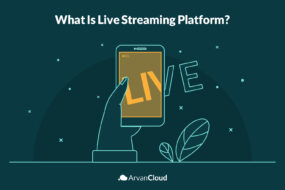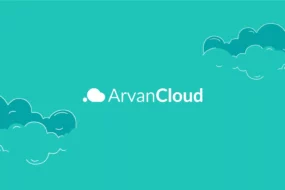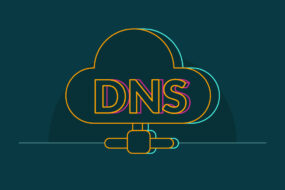
The popularity of video-on-demand (VoD) services such as Netflix, Hulu, and Amazon Prime has increased dramatically over the past few years. Video-on-demand services are gaining considerable popularity as an alternative to traditional television as an entertainment medium.
Several major players, including Disney and Warner Brothers, have recently entered the market to capitalize on the growing popularity of this type of service.
In addition to the services and content they provide to the end-user or consumer, VoD has created a new channel for businesses to display advertisements.
Services such as YouTube follow the AVoD or Ad-based Video on Demand model for generating revenue, which has received considerable attention from businesses and interactive media services.
In this article, we will discuss types of video-on-demand services and how businesses can use existing infrastructure to provide these services.
What Is VoD?
VoD stands for Video on Demand. VoD systems are IPTV systems designed to allow users to watch audio and video content from anywhere at any time using computers, mobile phones, or televisions.
VoD is a flexible system, and by using it, it is no longer necessary to watch a program when it is broadcast nationwide. The service also allows customers to fast forward, rewind or pause the program like a DVD player.
Customers can choose their favorite programs from the wide variety of VoDs usually included with an IPTV subscription. VoDs are classified into different categories, so users can find their desired programs quickly and easily. This service allows companies to create a high-quality viewing experience for their customers.
Types of VoD services
VoD services are divided into various groups depending on the service they provide to users or how they generate income. The three main groups of VoD are known as SVoD, AVoD, and TVoD, each of which is described below.
What Is SVoD?
SVoD (Subscription Video on Demand) services are similar to traditional televisions. The user can view the content in the service library indefinitely by paying a monthly fee (or any desired period). These types of interactive media services have faced a sharp increase in the number of users in the last decade, and especially in the past few years, and in the following sections, we will introduce the best examples among them.
Users have more freedom of action if they use SVoD. They do not need a long-term contract with the service provider and can leave if they are unsatisfied with the content or service.
This freedom of action poses a difficult customer retention challenge for SVoD operators. They generally try to attract and retain the audience by providing exclusive content and intense competition to obtain the license to broadcast popular movies and series.
Best SVoD Platforms
In this section, we examine some of the most popular SVoD platforms.
Netflix
Netflix has more than 210 million subscribers, and its primary audience is 74 million American customers. Netflix is a pioneer in SVoD broadcasting. Though Netflix has grown steadily since its emergence, it has maintained an extensive library of original content.
Disney Plus
There are currently over 204 million Disney Plus users, which is expected to reach 284 million by 2026. The growth has been largely attributed to popular franchises like Star Wars and Marvel. Additionally, it offers a large library of original content to children, making it one of the best platforms for kids.
Amazon Prime Video
A wide range of original content has recently made this platform popular, including series, documentaries, animated films, etc.
Hulu
In addition to its extensive library, Hulu offers live TV as well. Its owners, The Walt Disney Company, expanded its global coverage earlier this year.
HBO Max
Between 2019 and 2021, HBO Max’s subscribers increased by more than 40%. A synonym for quality entertainment, HBO Max’s original content includes titles and franchises that are admired by viewers everywhere.
Many people subscribe to SVoD streaming services as their television consumption constantly changes. Movies, series, special offers services, ad-free content, and 24-hour availability are reasons for their popularity.
What is AVoD?
This interactive media category does not charge the end user a fee. Their approach to showing advertisements is very similar to traditional television. The user will not pay to watch the original video content but will be required to watch the ads. Among the most famous services in this category, we can mention YouTube at the international level.
Some companies in the VoD industry use a combination of the above models to generate revenue and provide services to users. Despite operating in the AVoD (Advertising-based Video on Demand) category, YouTube offers users the option of purchasing a subscription and not displaying ads and access to exclusive content. Another example is Amazon Video, which charges subscribers a separate fee for certain sporting events or new movies.
Best AVoD Platforms
According to new data from Kantar, Hulu accounted for most of the ad sales over the period with $2.1 billion, followed by Paramount+ at $822 million, Peacock with $279, and Tubi with $250 million.
What is TVoD?
Transactional Video on Demand (TVoD) is the opposite of SVoD. The user of these services buys or runs the content for the number of times it is displayed.
Among this category’s subcategories, we can mention EST or Electronic sell-through, where the user pays for the content once to receive and access it permanently. Another subcategory is DTR or Download to rent, which makes video content available to the user for a limited time by charging a fee.
Many users prefer watching ads to paying for video content.
International TVoD services generally provide users with more up-to-date content and bring content producers better income. They generally try to attract and keep the audience with price competition.
Best TVoD Platforms
In terms of TVoD platforms, Apple iTunes, Sky Box Office, and Amazon’s Retail or Buy program are among the best.
The Features of a Good VoD Service
Most video and social media hosts, such as Instagram, do not meet the needs of businesses and high-volume videos. Therefore, professional and first-class platforms can provide a better experience for both the presenter and the audience.
Here are some important features that a VoD platform can provide to video providers:
- Scalable Content Delivery: Through CDN service, VoD providers provide options to choose different devices such as mobile phones, tablets, or laptops. This allows the provision of quality content across all devices worldwide, regardless of device type.
- Access Permissions: It is possible to define custom access and user login permissions. VoD platform security options can be used to ensure that the intended audience can view or share VoD content.
- Live Broadcast Recording: The audience can access the recorded content when they are
ready to watch it since it can be recorded live and stored in a VoD library.
- Showing The Logo: The video publisher can use his logo, color, and personal and commercial images and place his brand in the center of attention and vision of the audience. Also, it can deliver its VoD content ad-free and uninterrupted.
How Does a VoD Platform Make Money?
Video-on-demand models can be classified into three types according to how the rights holder makes a profit from the business. At the same time, methods of delivering content to consumers can also be classified according to how they make a profit.
- The Transactional Model (TVoD)
Through a monthly subscription service, consumers can access a specific content unit for a specified period through a transactional model.
Depending on the price and period, it ranges from $1.99 to $15.99. The period can vary from 48 hours to 30 days. Several delivery methods are available, including hotels/airlines, cable providers, satellite, and IPTV channels. In addition, Electronic Sales through EST, also known as Download to Own (DTO), allows digital sales that are perpetually accessible.
- The Subscription Model (SVoD)
This ironic model was popularized by Netflix, whose beginnings were based on DVD transactional models.
Some territories have experienced prices between $3.99 and $5.99 for subscriptions, while the price has ranged from $8.99 to $9.99 for years.
It reduces profit margins on products that are expensive to produce but relatively inexpensive to distribute, thereby causing studios to question whether this will negatively affect their goals as a result.
- The Ad Model (AVoD)
Various advertising formats can be used in the current advertising model, including pre-roll, mid-roll, post-roll, bucketed full screen, skippable, or not, and many others.
Using video advertising services such as Brightroll, SpotXchange, Auditude, AdoTube Videology, YuMe, AOL One, and Google Adsense eliminates the need for a sales team to handle media buys or ad exchanges.
The best practices for advertising are still under development, but in general, revenue from advertisements is split between the platform rights holder, distribution partners, and aggregators, as well as the rights owner. Generally, content producers are favored 50/50 or 70/30 in most agreements; however, YouTube has a 45/55 rule that does not favor them, whereas Vimeo has a 90/10 rule that favors them.
- The Hybrid Model
While the ecosystem encompasses more than just VoD, three additional aspects should be highlighted. Sky TV in the UK and Crave TV in Canada, for instance, offer hybrid options that combine subscription with transactional VoD. Consequently, viewers can access additional content through the partnership between Sony’s Playstation Vue and Xbox Live.
Furthermore, many self-supporting services exist, including FilmBuff and DotStudio, which allow content creators to upload their own materials and run their marketing campaigns.
Comparing VoD Streaming Platforms
With traditional ways of seeing and engaging with content changing, media companies must innovate in their platform monetization strategies. What is the best way to decide between SVoD, AVoD, and TVoD? In general, it depends on the platform and the collection of content available to clients.
SVoD: There is an appeal to SVoD for media companies because it provides a steady income source. Consumers liked the recurring revenue model, and SVoD was a popular choice for cord-cutters in the early days.
Compared to AVoD and TVoD, SVoD models still struggle with customer retention, as they must regularly entice customers to renew with content or promotions – for example, many offer a discounted annual fee to attract new subscribers.
AVoD: The AVoD model provides a revenue stream for content that does not generate direct or recurring revenue from customers. Companies that collect or produce extensive content portfolios tend to take advantage of it. AVoDs have some disadvantages, however.
The AVoD model can be difficult for media companies to retain customers due to its perceived lower quality content than SVoD or TVoD services or the commercial interruptions it causes.
AVoD might also pose unique technological barriers to ensuring that advertisements are displayed appropriately, customized, and interactive.
TVoD: TVoD offers clearer expectations for providers and customers than SVoD or AVoD. When selling a rental or license, you know exactly the costs and overhead associated with each type of content, allowing for better pricing.
Customers know what they’re purchasing, but that doesn’t mean they’ll keep using the platform more than once, even if some free content is provided. Since TVoD customers might be infrequent, it’s hard for the platform to collect enough data to make recommendations that encourage them to return. TVoD providers often need to match or beat competitor prices to boost customer loyalty.
It is also essential for TVoD providers to identify the user’s location quickly and accurately before processing payment and providing the appropriate language content to the user.
| TVoD | AVoD | SVoD |
| Pay per Title | Free Access, Ads Supported | Unlimited Access on Monthly Fee |
| Most Common with Premium or Exclusive Content | Revenue Based on Views | Recurring Revenue |
| Bundles Well With other Models | Growing Popularity | Most Popular Streaming Model |
There are strengths and weaknesses to each of the three kinds of video on demand – which is why many media companies use a combination.
According to the product type, larger companies can even offer different VoD services. For example, YouTube offers free user-created videos to customers (AVoD) while also offering premium content to rent or purchase (TVoD) and subscription-based entertainment services like live TV (SVoD).
ArvanCloud Video Platform
ArvanCloud Video Platform service allows content producers and distributors to convert their video content with several different qualities into different formats and store and publish them in a safe cloud space without infrastructure concerns.
Some of the features of the ArvanCloud video hosting service are as follows:
Compatible With All Devices and Browsers
This product displays your video content well on personal computers, mobile phones, tablets, and smart TVs. This feature is also available in the ArvanCloud live streaming service.
Best Quality Streaming, At Any Internet Speed
With ArvanCloud’s video hosting service, video content can be converted to multiple formats and audio and video quality automatically or with your settings. With the help of Adaptive Bitrate Streaming, taking into account the current speed and bandwidth of the user, the best and most appropriate quality is displayed to the audience when playing the video.
Quick And Easy Publishing of Video Content
Uninterrupted and continuous playback of video streaming content, taking into account the speed and current bandwidth of the user.
Traffic Report
The ArvanCloud video hosting service reports the number of visits and viewing time with the ability to filter based on different parameters.
Video Ads
Add ads to video, integrated with ArvanCloud’s video ad solution.
Integrated with ArvanCloud CDN
Significant increase in content loading speed due to integration with ArvanCloud CDN.
Free web player
With complete compatibility and support for all platform features
Simplicity
Simple and fast setup away from technical complexities
Manage with API
Manage video hosting service with API
Can Users Download a Video from the ArvanCloud Video Platform?
ArvanCloud Video Platform allows you to restrict access to your channels and videos on the video hosting service. This feature is implemented with the name “Safe Link”.
After activating the secure link on the content, only users who access the video with their specially issued encrypted link can see the video. These limits can be limited based on the specific IP address and duration of access.
Customers can enable secure links if they want the users to not be able to download videos. They can refuse to activate the secure link if they have no problem downloading videos.







